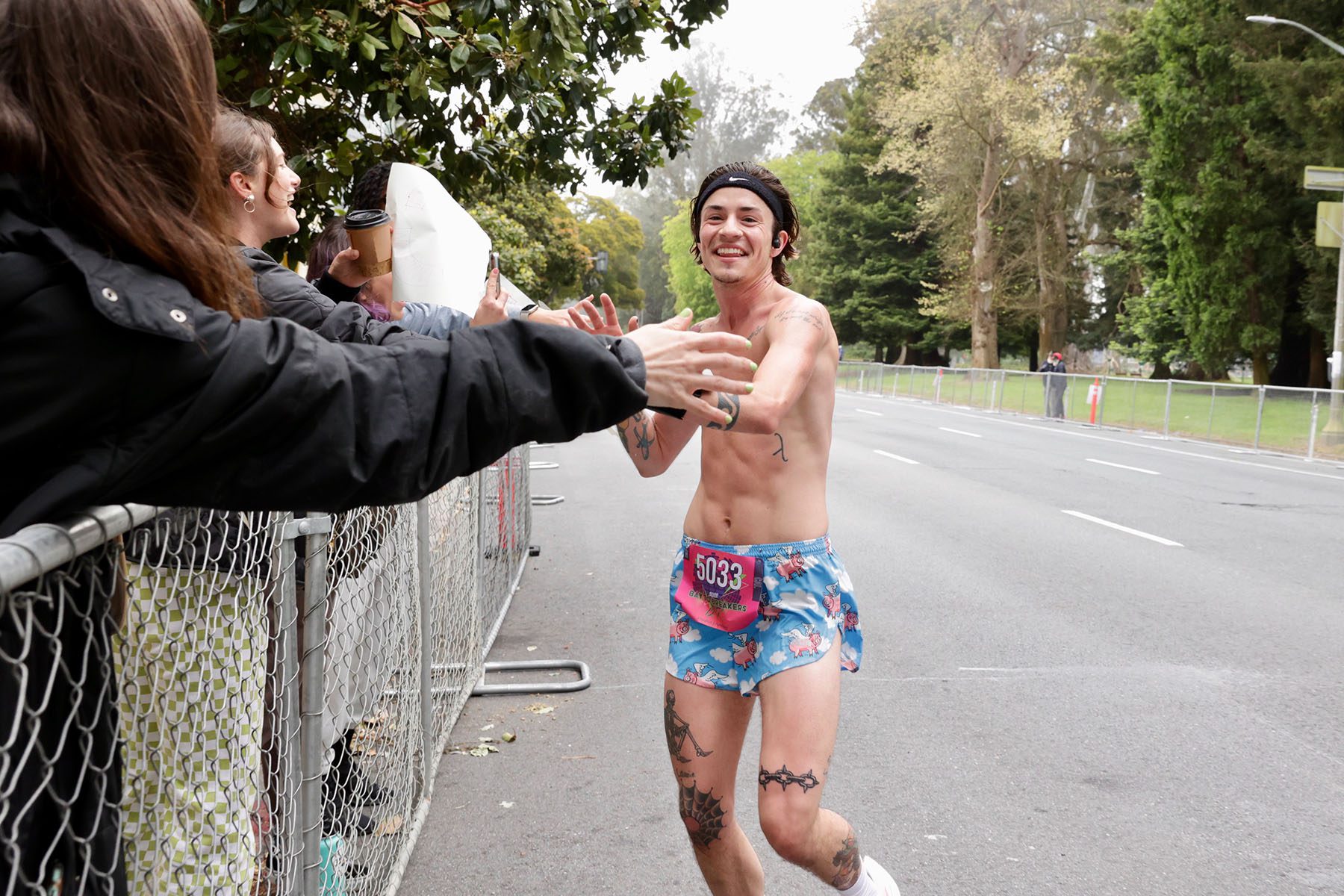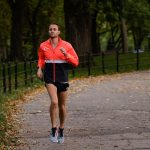Jake Fedorowski was preparing to sign up for the Eugene Marathon in Oregon when they realized it didn’t have space for them. The race wasn’t full — Fedorowski is nonbinary, and the marathon only had male and female divisions.
They contacted the race director to request a nonbinary division. The director was responsive and excited about the idea, but wasn’t sure on the best way to go about it. Fedorowski didn’t have the answers then, either.
The marathon ultimately didn’t introduce a nonbinary category in time for the race earlier this year. The race director did not respond to a request for comment. Federowski decided not to participate.
“Why would I pay money to a race or to an organization to just misgender me?” they said.
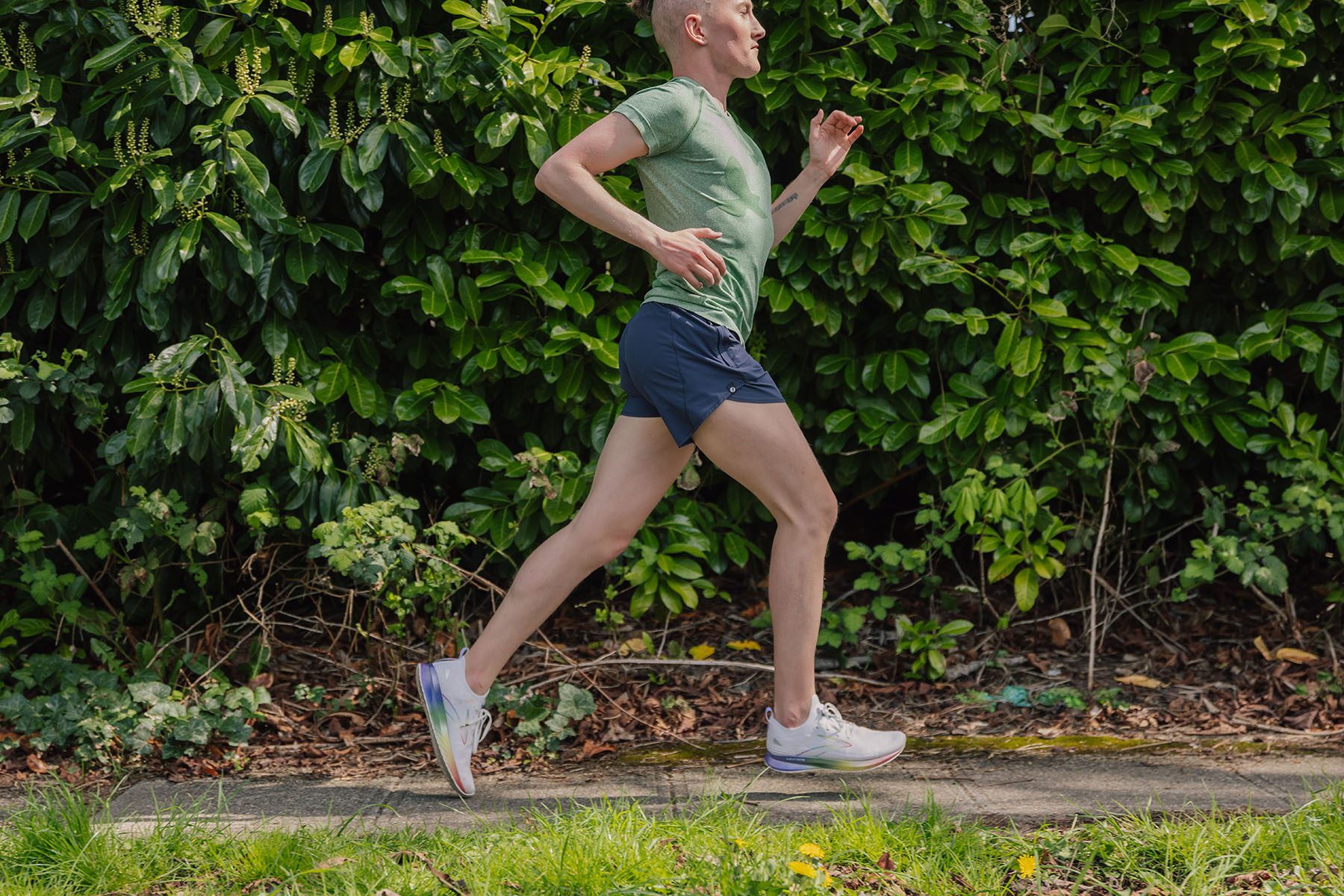
Race by race, Fedorowski and other nonbinary runners are pushing for more inclusivity in running. This summer, Fedorowski — a board member of LGBTQ+ running group the Seattle Frontrunners — published a how-to guide for race directors who want to include nonbinary categories. That included advice on some of those questions that the Eugene Marathon asked: how to create a nonbinary division in races, using gender inclusive language and restrooms, allowing nonbinary competitors to win prizes and awards alongside cisgender participants, and creating score results that include nonbinary people.
More races across the United States are creating divisions for nonbinary runners to compete, and in some cases, to win awards. The New York City Marathon introduced a nonbinary category last year. The Chicago Marathon also quietly added a nonbinary registration category this year, with over 70 runners registered in that division for this year’s race. The Boston Marathon will include a nonbinary category in 2023, though athletes say the race needs to flesh out its policy before nonbinary runners can be fully included.
Fedorowski keeps track of races that have created nonbinary divisions, or have simply opened up registration to nonbinary racers, on a public spreadsheet that other athletes can contribute to. Those affirming races include marathons in Miami, Philadelphia, Pittsburgh, Seattle, Colorado Springs and Flagstaff, Arizona. Since they started the spreadsheet in January this year, they’ve only seen more races become inclusive and are adding more by the day.
A driving force behind this progress are nonbinary athletes personally asking to be included and explaining why they deserve to race as themselves.
“Running is a resistance, because it’s a way to feel good. It’s a way to feel valued,” said Cal Calamia, a transmasculine nonbinary runner based in San Francisco. Although Calamia’s body and identity has changed, running hasn’t changed for him in the 15 years that they’ve been putting their shoes on, going outside and taking one step at a time. “I think about nonbinary folks being excluded from running as an intentional act of not only keeping us away from feeling connected and feeling valued, but also keeping us away from physical health.”
J Solle, a nonbinary runner and director at large of Front Runners New York, an LGBTQ+ running club, decided to run only in nonbinary divisions after having to compete in a category they did not identify with in multiple races. Competing and accepting an award in the male category felt like their presence was invalidated, they said.
But that choice limits their race options.
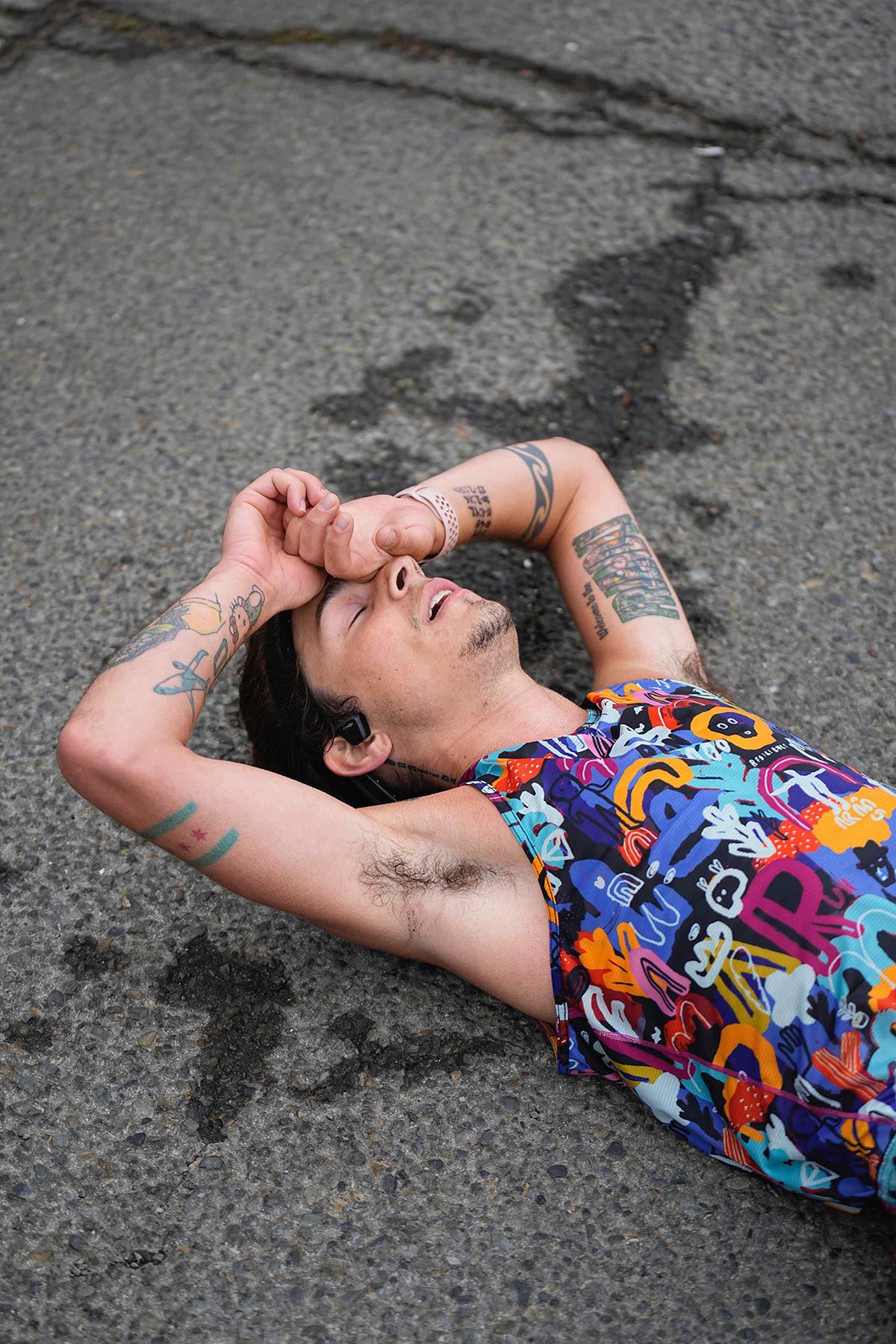
“It’s frustrating, but I guess it’s a trade-off that I’m gonna make,” Solle said. “It’s more important for me at the end of the day to feel like I’m being authentic.”
Efforts by the Boston Marathon — one of the races on Solle’s bucket list — show how simply saying “yes” is just one of many steps needed for full inclusion, especially when runners don’t have all the details on qualifying for one of the most competitive races in the world.
In 2023, the Boston Marathon plans to allow nonbinary competitors to race and be ranked within a nonbinary category and register for the race under a nonbinary gender option. To register, nonbinary athletes must have finished a marathon as a nonbinary participant under a certain time during the current qualifying window, from September 2021 to now. However, the marathon doesn’t yet have further entry details, which means that Solle doesn’t know what qualifying time they would need to race in the marathon’s nonbinary division. Runners spend years training to qualify for Boston, so not having the times this close to the race in April 2023 can be a major hindrance.
“If you don’t also create clear standards for nonbinary people to be qualifying, then it’s insufficient,” Solle said. The Boston Marathon should follow the New York Marathon model and publish the qualifying times needed for nonbinary participants, Solle said. Since this spring, when another one of their nonbinary members began asking to join the race, Front Runners New York has been planning a formal ask to the Boston Marathon to be more inclusive, said Gilbert Gaona, president of Front Runners New York.
Fedorowski said that while they applaud the marathon’s nonbinary division, the lack of transparency worries them — and makes nonbinary runners’ participation seem arbitrary.
Boston Marathon spokesperson Chris Lotsbom did not say whether nonbinary runners will be eligible for the same prize money as cisgender athletes, only that the marathon continues to work on best practices. Registration questions are the same for all athletes, regardless of gender identity, Lotsbom added.
Several nonbinary runners told The 19th that what would really tip the needle towards widespread and more rapid inclusion is if organizations like USA Track & Field, Ironman and World Triathlon spoke up and created policies mandating that nonbinary runners and athletes be included. That would cause a ripple effect among qualifier races that wouldn’t act otherwise, creating industry-wide standards for more races to follow and putting on more pressure than individual racers asking to be included one at a time.
USA Track & Field, the country’s governing body for road running, track and field, and cross country running, said in a statement that it cannot issue any policies for nonbinary inclusion unless World Athletics, the international governing body for most running races, finishes a policy review and takes action first. In order to rank nationally or internationally or make records, races for professional runners and all other runners must follow rules set by these organizations.
World Athletics said in an emailed statement that events that want their results recognized by the group — who seek world ranking points — are required to follow the current rules, which only recognize male and female categories. Triathlons, marathons and road races that don’t fall under their jurisdiction “are free to make other decisions,” the organization said.
Ironman said in a statement that while the organization does not have a nonbinary category, it has discussed the issue and is currently reviewing World Triathlon’s newly released policy for transgender athletes, since World Triathlon is the governing body for triathlons as a whole. Ironman also has its own policy for trans athletes.
After September 1, World Triathlon’s new policy will take effect, requiring trans women to provide evidence that their testosterone levels have not exceeded a certain amount for at least 24 months in order to compete with other women. The policy also specifies that trans women can compete with other women only after four years have passed since they last “competed as a male in any sporting competition.” The organization’s new policy does not include nonbinary athletes, spokesperson Olalla Cernuda said over email.
“I really believe that if the big races do it, it makes it a lot easier for the little ones,” said Rach McBride, one of the world’s few professional nonbinary triathletes and an Ironman champion several times over. While McBride doubts that Ironman would risk losing a limited number of qualifier spots at the world championships for men and women by creating a third division, it also comes down to how much the organization cares.
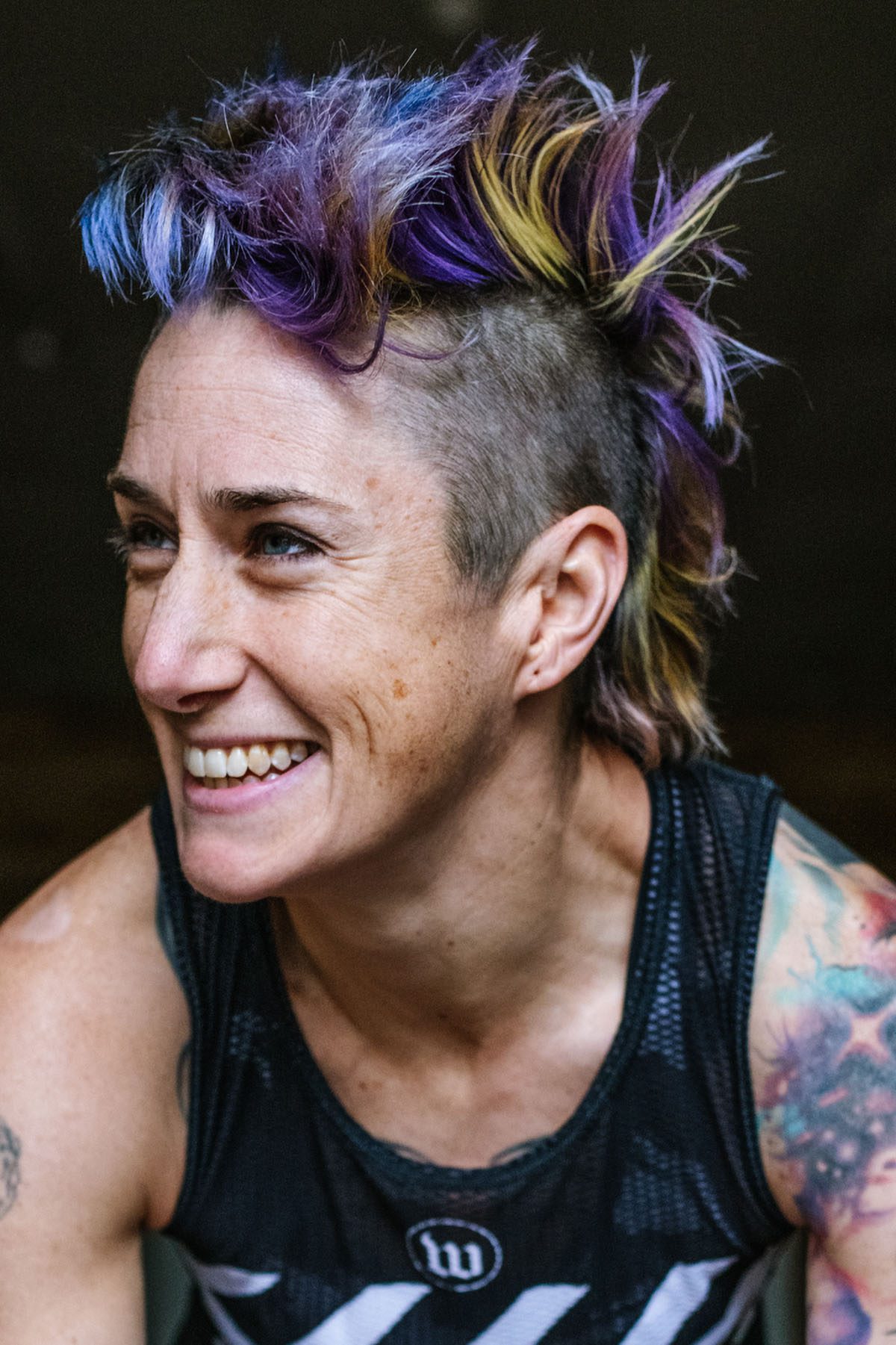
“I think they just don’t care,” McBride said. “They don’t care about inclusion.”
McBride said they experienced the profound difference of being welcomed as a nonbinary athlete last November, when they were able to enter a race in a nonbinary division for the first time. Standing on a podium at the Big Sugar NWA Gravel Race, a cycling race in Bentonville, Arkansas, something finally clicked. Having to compete in the women’s category often leaves them feeling like an imposter or just out of place. They hadn’t realized the extent of the dysphoria that came with standing on the women’s podium until they were able to stand on a nonbinary one.
“It felt when I was on that podium, I just felt like I was me. I felt like I was validated as me and recognized as the gender that I identify as,” they said.
For Nick Pham, a nonbinary trail runner in Portland, pushing the Portland Marathon to let them compete meant not taking “no” for an answer.
“I started asking for permission to join without even realizing what a huge wall was standing in front of me,” they said.
Pham couldn’t register for the October 2021 half marathon except as a male or female. After the marathon first told them in June last year it couldn’t change the registration portal, Pham took to social media to gauge if they were asking for too much with other trans and nonbinary people.
They found that most people had no idea that nonbinary people were being excluded from races.
“It’s not even that other people aren’t upset about this. Nobody even knows,” they said.
Pham pushed back harder — contacting race sponsors, adding a lawyer they knew to email exchanges, and explaining to Portland Marathon why it was so important for nonbinary racers to join.
Portland Marathon agreed to give Pham a handwritten bib and helped them register without going through the website. But Pham pressed on for more codified inclusion.
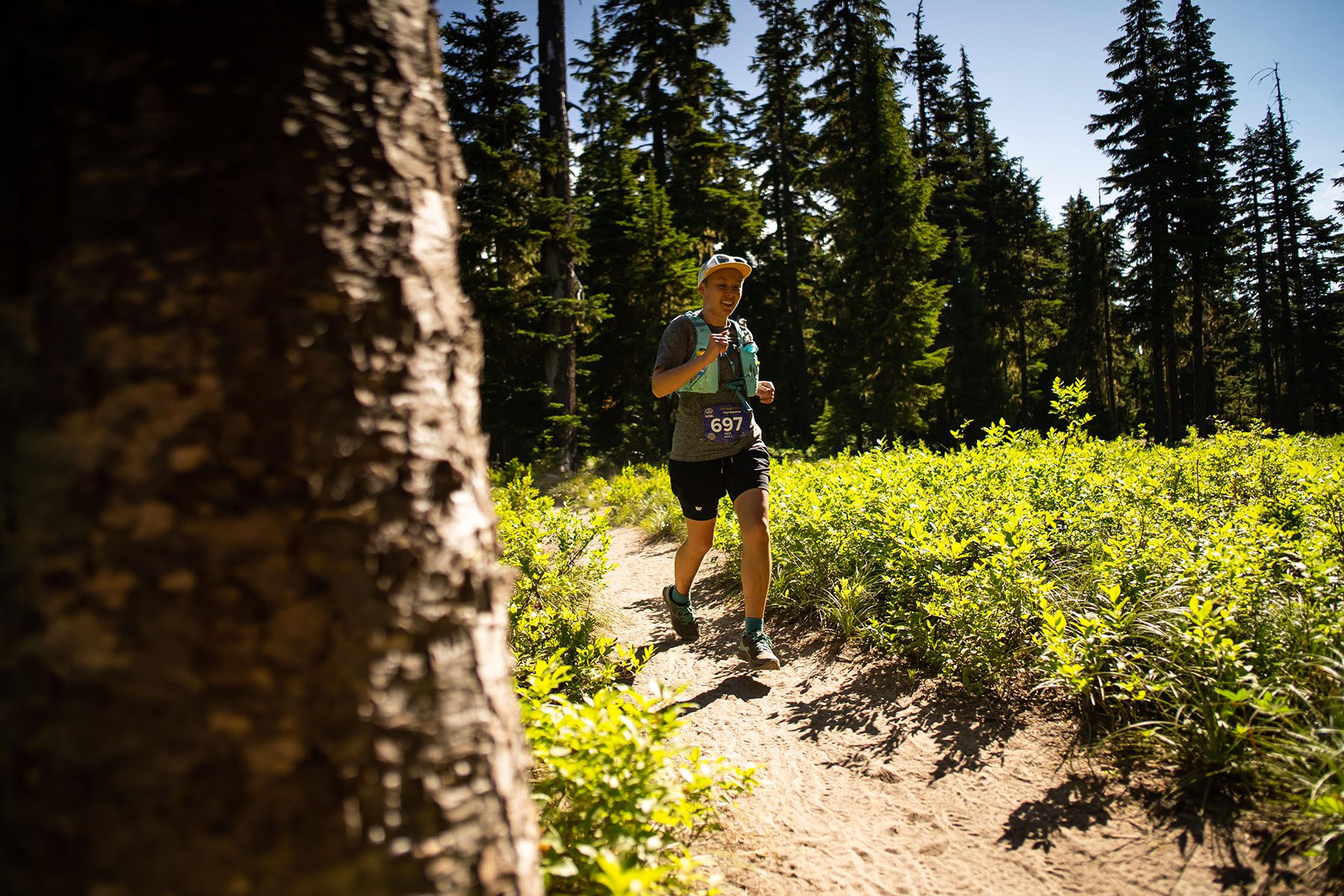
Five weeks before race day, Portland Marathon contacted Pham confirming that they had fixed the registration portal. The race now allows runners to sign up in a separate gender division, “non-binary or prefer not to disclose.”
In a statement, Portland Marathon said it is aware that requiring racers to register as either male or female is outdated and discriminatory, and that it sends a harmful message to nonbinary runners. Forty-three racers have registered as nonbinary — or not disclosed their gender — when signing up for this year’s race in the fall, spokesperson Chris Braun said.
In May this year, Calamia became the first person to win the San Francisco Bay to Breakers race in the nonbinary division. They were able to gain that recognition after leading a pressure campaign for the race to let nonbinary people win awards. Previously, the race let them register, but no chance to place.
“I think it goes to show that nonbinary people are so often erased and dismissed,” he said. Being told that they could compete, but still wouldn’t be able to win, struck him as an apt summary of how society fails to take nonbinary people seriously.
Last month, Calamia became the first winner of the San Francisco Marathon’s newly created nonbinary division. Forty-two other runners joined the division — which the organization announced eight weeks prior to race day.
“It’s amazing to be a part of the category,” they said. “It’s a huge improvement from having none at all.”
While the race organizers made an effort to follow Fedorowski’s guide to nonbinary inclusion, Calamia said, there were still significant gaps — like the race expo not having gender neutral bathrooms and their bib categorizing them as “not specified” instead of nonbinary.
The San Francisco Marathon is working to place all-gender restroom signs at next year’s expo, a spokesperson said in an emailed statement, and there wasn’t time for nonbinary division bibs to be reprinted before the race started. The marathon plans to send a survey out to nonbinary division runners for feedback in the coming weeks, according to Shoshanna Howard, a public relations consultant speaking on behalf of the organization.
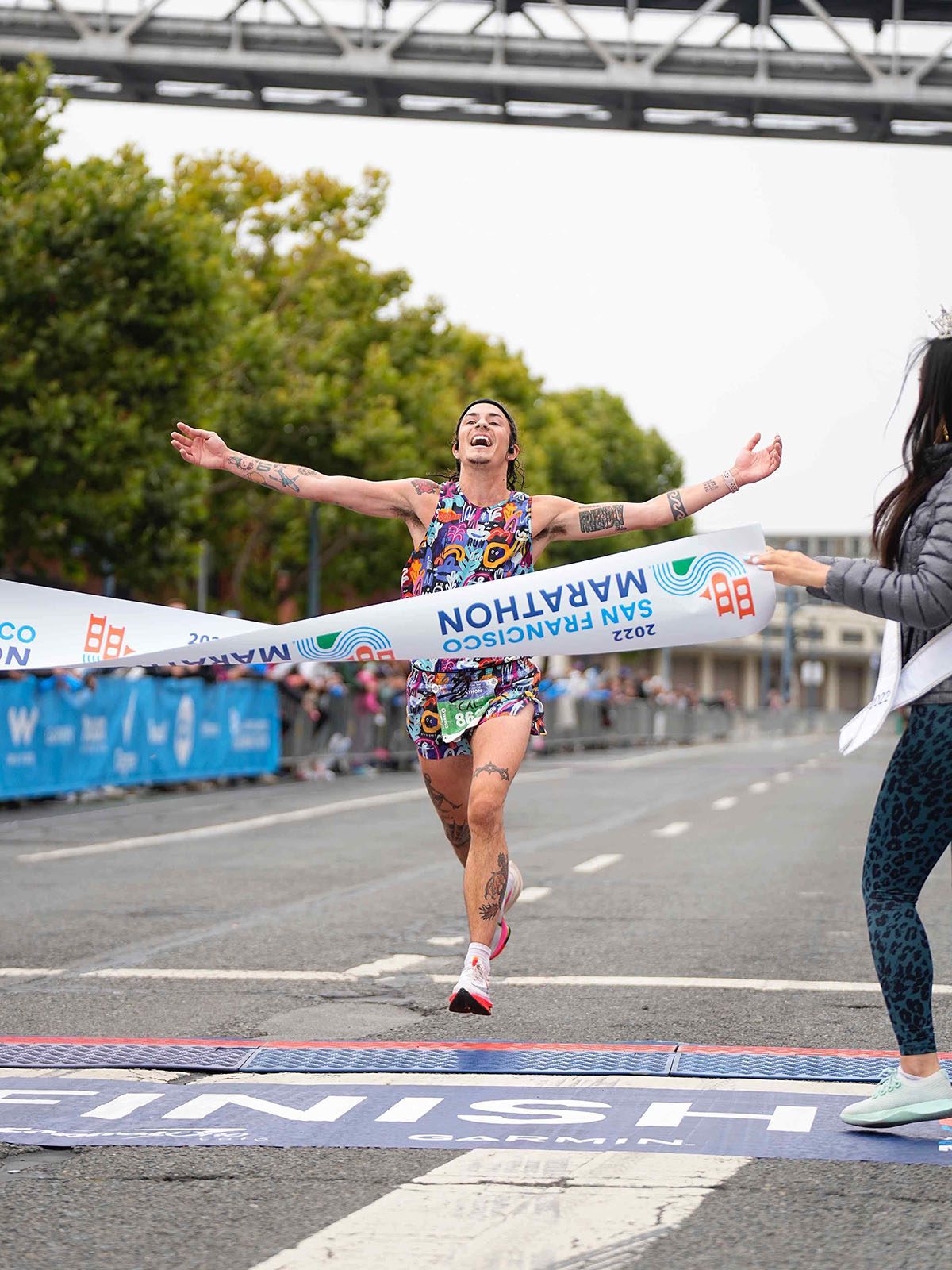
For Calamia, the California races were part of a return to competition. Before the conversation around nonbinary race participation started to shift, Calamia had stopped registering for marathons for about three years. Being able to compete fully as a nonbinary person means they can have a good relationship with running again.
Pham also spoke about how running is deeply entwined with their trans identity, since they invested in it at the beginning of their transition. It’s a grounding experience that creates a space for them to feel strong even during a day when dysphoria eats at them at all other hours.
“Everything else falls away,” they said. “While I’m running, I’m kind to myself and I found that was a space I was able to love myself in. So as I continued into my transition, it became so much a part of how I healed and how I found myself.”
